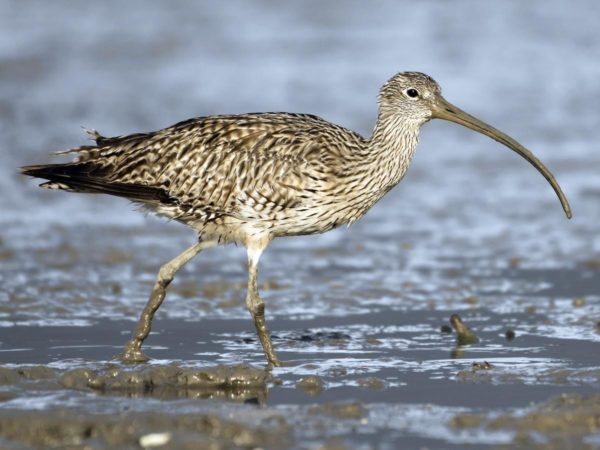• The Far Eastern curlew was spotted in Bataan for the first time by local birdwatchers.
• This incident is one of many recently reported migratory bird sightings in unexpected locations.
• These observations may be a result of increased interest and activity in the local birdwatching scene.
On January 12, Inquirer.net reported a birdwatching first, care of the Wild Bird Club of the Philippines (WBCP).
According to the report, the Far Eastern curlew (Numenius madagascariensis) was spotted in Bataan for the first time. Birdwatchers observed the migratory bird, previously sighted in Negros and Cebu, in Barangay Sibacan during their annual bird census.

Big bird
According to Australia’s Threatened Species Recovery Hub, the Far Eastern curlew is the largest migratory shorebird in the world.
This large bird loves to snack on Australia’s crabs and molluscs. Every year, it flies to eastern Russia and northeastern China to breed. Its other known migration spots are in Brunei, Bangladesh, Japan, Malaysia, the Philippines, Singapore, Thailand, and Vietnam.
The Far Eastern curlew is among Australia’s high-priority bird species in its conservation efforts, and with good reason. Due to food scarcity, pollution, hunting, and habitat loss, the species’ population has dropped by a staggering 80 percent over three decades. In fact, from being listed by the International Union for Conservation of Nature (IUCN) under Least Concern in 2004, it has become Critically Endangered in Australia.
Since roughly three-fourths of this species’ global population head to Australia annually, the Australian government has ramped up its efforts to save it from extinction.
Tweet thoughts
The news of the unexpected sighting caught the attention of Pinoy social media users. Some even had their own theories as to why the species would pop up in Bataan in the first place.

The reasons behind this surprise sighting, though, aren’t as straightforward as one might think. As a matter of fact, bird migration itself remains a bit of a mystery.
Scientists believe that birds employ a combination of navigational methods during migration. According to researchers, many bird species successfully navigate using the magnetite in their nostrils as receptors of the Earth’s magnetic field (though this doesn’t seem to be the case for pigeons). Alternative ideas on bird migration include using geological and even stellar formations as their pathfinding guides. Thus, it’s unlikely that the curlew sighting was just a fluke.
Additionally, the Far Eastern curlew in Bataan isn’t the only recently recorded rare migratory bird sighting. Just this week, sightings of the Black-faced Spoonbill, the Eurasian Spoonbill, and the Rosy Starling were reported in Pampanga, Batanes, and Rizal, respectively.
So, what’s up with all of these strange sightings?
Bird brained

It’s tempting (and understandable) to conclude that climate change influences these seemingly new migratory patterns.
After all, climate change certainly has the potential to disrupt migratory species’ breeding grounds, non-breeding areas, and migratory routes. The effects of climate change are particularly devastating to long-range migrators, causing food scarcity and throwing their migration schedules out of whack.
A more plausible explanation for these sightings, however, would be the increased interest and enthusiasm for birdwatching in recent years. Nowadays, birdwatching equipment (such as high-powered cameras) are increasingly available and affordable. Furthermore, birdwatching groups have become more active in monitoring year-round bird behavior, especially in the Philippines.
Wing watchers
Additionally, greater opportunities have emerged for citizen scientists and avian enthusiasts to be more involved in species conservation efforts.
One such example is eBird, a free online bird checklist developed by the Cornell Lab of Ornithology. Through this free platform, users can submit reports of bird sightings, which country experts verify and add to the database. (Here’s the eBird entry for the Far Eastern curlew.)
With enough information on the database, avid avian watchers can verify if the species actually did change its migratory behavior. They may even be able to ascentain whether the perceived change, if any, was the result of unpredictable weather conditions, an ongoing search for new food sources, or simply a migration pattern that wasn’t observed before.
Whichever the case, one thing is certain: Now more than ever, we should keep our eyes to the skies.
Cover photo: Lucas Brook
References
- http://datazone.birdlife.org/species/factsheet/22693199
- http://www.birdwatch.ph/html/gallery/fecurlew1.html
- http://www.environment.gov.au/cgi-bin/sprat/public/publicspecies.pl?taxon_id=847
- http://www.nespthreatenedspecies.edu.au/news/curlew-globe-trotting-update
- http://www.planet-science.com/categories/over-11s/natural-world/2011/10/why-don%E2%80%99t-migrating-birds-get-lost.aspx
- https://businessmirror.com.ph/ensuring-a-strong-link-for-migratory-bird-sites/
- https://newsinfo.inquirer.net/1072362/russian-bird-spotted-in-bataan-for-1st-time
- https://www.abc.net.au/news/2017-01-27/push-to-save-far-eastern-curlew/8218380
- https://www.birdlife.org/worldwide/news/how-will-climate-change-affect-bird-migration-our-scientists-explain
- https://www.iucnredlist.org/species/22693199/118601473
- https://www.nature.com/articles/nature11046
- https://www.ncbi.nlm.nih.gov/pmc/articles/PMC3552369/
- https://www.sunstar.com.ph/article/415652
Author: Mikael Angelo Francisco
Bitten by the science writing bug, Mikael has years of writing and editorial experience under his belt. As the editor-in-chief of FlipScience, Mikael has sworn to help make science more fun and interesting for geeky readers and casual audiences alike.







